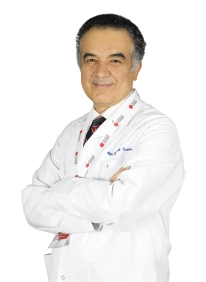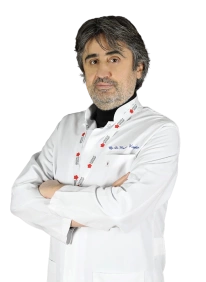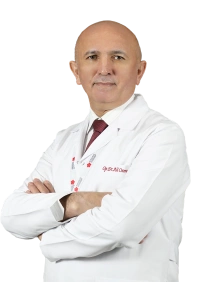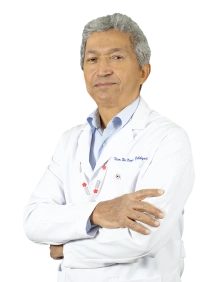Otorhinolaryngologic Diseases
Otorhinolaryngology (Ear Nose and Throat Diseases)
Otorhinolaryngology is a branch of medicine that deals with conditions of throat, ears and sinuses, oral cavity, pharynx, larynx and neck region and their medical and surgical treatments.
The otolaryngology department (ENT) of our hospitals provides services to both adults and children. With our expert physicians and the cutting-edge technology equipment, we aim to provide world-class ENT services to our patients with the otolaryngological complaints.
In all of our hospitals, all diseases related to ear, nose, throat and head and neck region are diagnosed and treated.
Main disorders treated by ENT Department
- External ear, external auditory canal, tympanum and middle ear disorders.
- Nasal and paranasal sinuses-related disorders (deformities, septal deviation, concha hypertrophies, sinusitis and nasal polyps)
- Oral cavity, tonsils, pharyngal and laryngeal disorders
- Salivary glands.
- Head and neck diseases
ENT diseases are among the most common reasons for hospital admissions all over the world.
Diagnostic Methods of Ear, Nose, Throat Diseases
- Balance maneuvers
- Examination of sinuses, nose, throat and vocal cords through endoscopic methods
- VNG device
- Audiology (hearing tests)
Treatment Methods of Ear, Nose, Throat Diseases
- Nasal and facial aesthetics, deviation and concha surgeries
- Snoring and concha operations through radiofrequency
- Functional endoscopic sinus surgeries (FESS)
- Tonsillar, adenoid and ventilation tube operations
- Middle ear and tympanum surgeries
- Tumor operations for head and neck region
- Salivary gland disorders, medical and surgical treatment
Common Ear Nose Throat Complaints
As one of our sense organs, the ear not only helps us to hear, but also helps us to provide balance. Any discomfort in the ear causes deteriorations in this function. The most common symptoms of ear diseases are; ear pain, ear discharge, ear congestion, tinnitus and dizziness.
Tinnitus: Patients suffering from this complaint state that they hear buzzing, or siren sounds in their ears. There are many conditions that cause tinnitus. Tinnitus can be caused by diseases such as allergic rhinitis, sinusitis, ear infections, fluid in the middle ear, tumor of the nerve that provides balance and hearing, damage to the auditory nerve for various reasons, disorders in the eardrum and exposure to very loud noise, as well as psychological reasons.
Vertigo: The inner ear is the balance center of the body. Diseases emerging here can cause dizziness. Dizziness, also known as vertigo, is usually caused by moving fast while turning around or bending over and getting up. The main types of vertigo originating from the ear are:
- Benign positional vertigo
- Vestibular neuritis
- Labyrinthine
- Vestibular migraine
- Perilymphatic fistula
- Meniere's disease
*With the VNG device in our otolaryngology department, the cause of the vertigo complaint is easily detected and treated.
Earache: The biggest cause of this complaint is outer and middle ear infections. In addition to sinus, tooth and throat infections; allergies, pressure trauma, earwax, damage to the eardrum, jawbone problems, otitis media, dental abscess and eczema can also cause earache.
Sore throat: Sore throat, which is the most common symptom of many diseases, worsens with burning in the throat, dryness and swallowing. Colds, flu, dry and dusty air are the most common causes of sore throat. Other causes of sore throat are; infectious mononucleosis, measles, chickenpox, croup, pet dander and allergies to objects such as hair, mold, dust and pollen, talking loudly for a long time, reflux disease, and HIV infection. Sore throat is one of the most common ENT complaints.
Runny nose: The excessive secretion of mucus and the flowing of this mucus from the nose are called runny nose. Nasal discharge is a transparent liquid and but it might be denser sometimes. The discharge is seen in two ways; it either flows down the nostrils or runs down the back of the throat into the throat. In addition, nasal congestion may sometimes accompany this situation. Colds, flu, allergies, and various irritants are the most common causes.
Tonsillitis: Tonsils are soft structures located on both sides of the throat. Tonsils are usually swollen due to respiratory diseases. Among the treatments that you can apply at home without going to the doctor include gargling with salt water, using throat sprays, drinking warm teas prepared with honey and using an air humidifier. However, if the complaint persists after one or two days, it is absolutely necessary to be examined by an ENT specialist.
Snoring: The relaxation that occurs in the soft palate, tonsils and uvula in the pharynx while sleeping creates a vibration in this area. The sound produced during this time is also called snoring. If the person has any infectious disease, this can increase the snoring. In addition, sleeping position, age and weight are other factors that determine the severity of snoring.
Other procedures by our department
• Endoscopic tear occlusion operations
• Vocal cord operations
• Prominent ear surgery
• Audiological rehabilitation
• Vestibular rehabilitation
FREQUENTLY ASKED QUESTIONS
What is Upper Respiratory Tract Infection?
The parts above the vocal cord are called the nose, throat and larynx, and the diseases seen in this area are called upper respiratory tract infections (URTIs). Cold and polluted air, spending a long time in crowded and closed areas cause upper respiratory tract infections more commonly. Upper respiratory tract infections, also known as the common cold, are among the most common ENT diseases. Pharyngitis, tonsillitis, sinusitis, flu and common cold are the most common types of upper respiratory tract infections.
When Should Ear Cleaning Be Done?
Ear cleaning is not a procedure to be done frequently. Inside the ear, there is a secretion called cerumen, which ensures safety. This secretion does not need to be cleaned up every day. When the secretion leaks out, it can be cleaned with a cotton ball, but nothing should be inserted into the ear. If the accumulated secretion in the ear has hardened, you should not try to clean it at home, but an otolaryngologist should definitely be visited. The ENT specialist will use glycerin or special oils to soften the earwax and clean it by vacuuming method.
What is pharyngitis?
Inflammation of the pharynx, located at the back of the throat, is called pharyngitis. Pharyngitis is a disease that manifests itself with difficulty in swallowing, pain and itching in the throat. Pharyngitis, which is known as sore throat and throat inflammation among the people, mostly occurs in the winter and is easily transmitted to other people. Pharyngitis can be caused by viruses or bacteria. Treatment varies depending on the cause of the disease.
Does Ear Nose Throat Department Perform Aesthetic Surgeries?
Nose aesthetic surgeries are performed by both otolaryngologists and aesthetic and plastic surgery specialists. The important thing here is that the doctor has the enough experience, correct equipment and aesthetic vision to perform the surgery.
GWhy Does Adenoid Enlarge?
First of all, “What is adenoid?” Adenoid is the name of a tissue located in the upper part of the tonsils located at the back of the throat. Adenoids and tonsils help protect the body by catching harmful bacteria and viruses. Children's frequent upper respiratory tract infections and genetic predispositions cause adenoid swelling.
Adenoid treatment can be done in two ways, medical or surgical, depending on the severity of the problem. If the adenoid is not infected, surgery may not be needed and it can be observed whether it shrinks spontaneously as the child grows. In case of infection, antibiotic treatment can be started. If the problem persists despite the use of medication, adenoid surgery is recommended.
What is the flu?
Flu, which is among the most common otorhinolaryngology diseases, is caused by influenza viruses and develops suddenly. It is a disease that affects the nose, throat and sometimes the lungs. Body temperature of 38 degrees and above, fatigue, weakness, headache, muscle and joint pain, dry cough are among the flu symptoms. Antibiotics are not effective for the flu treatment because the flu is caused by a virus. Using the drugs given for treatment as recommended by the doctor, drinking plenty of fluids, eating healthy and resting well contribute to faster recovery.
What is Sleep Apnea?
The cessation of breathing during sleep is called sleep apnea. In sleep apnea, there is relaxation in the muscles that keep the upper airway open. Sleep apnea, which is one of the most common diseases in the world among otolaryngological diseases, leads to complaints such as poor quality sleep, constant drowsiness during the day and lack of concentration when not treated. It can also cause more serious problems such as high blood pressure and heart rhythm disorders.
Sleep apnea treatment varies depending on the condition of the person and the severity of disease. Treatment options include making lifestyle changes, surgical treatments, and using positive air pressure. You can make an appointment with our ENT specialists for sleep apnea treatment. With the polysomnography test (sleep test) performed in our sleep laboratory, sleep apnea disease is detected and the treatment method is determined according to the result.




















